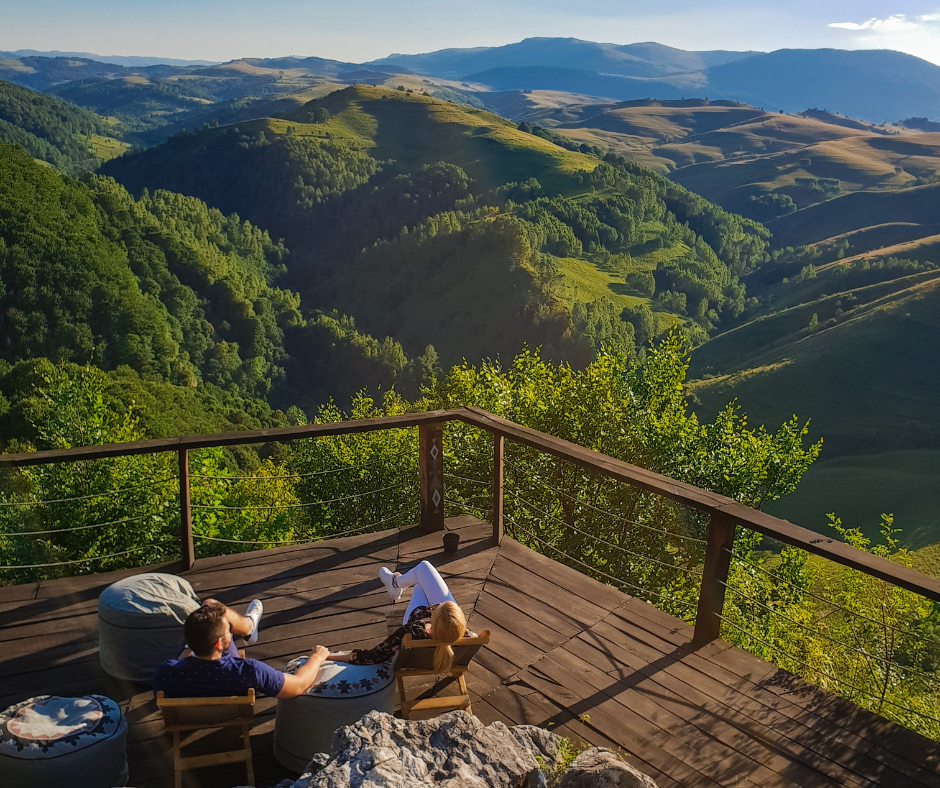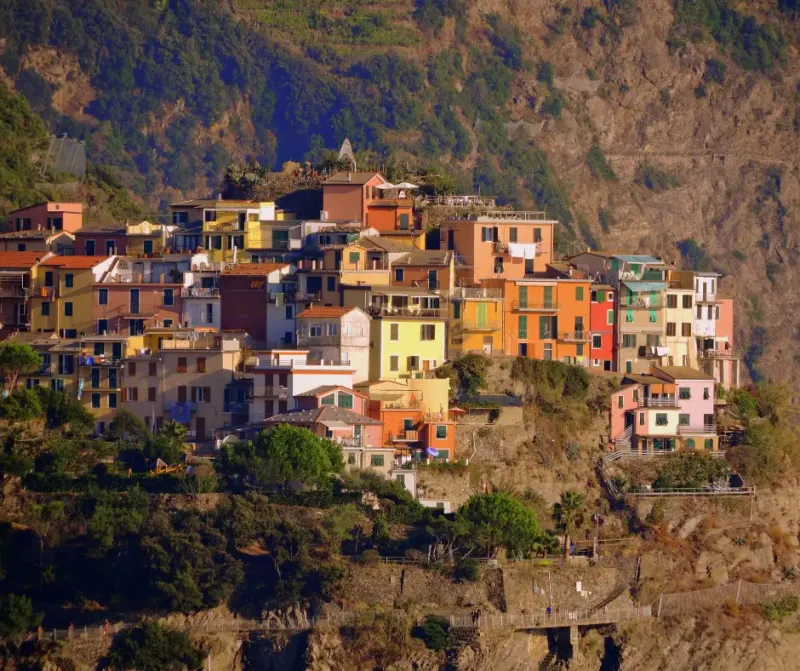Medieval town walls and towers, ancient castles, and cobbled streets are just a few hints of the rich history of the young country, which was established only in 1918. Tallinn, nicknamed the European Silicon Valley, is today a well-known hub for foreign investors, startups, and entrepreneurs, and the country was among the first movers introducing digital nomad visas and e-residency.
🌱 Travel health insurance for Estonia
🇪🇪 Entry requirements for Estonia
- Visa: Valid Schengen visa.
- Insurance: Travel health insurance that matches the Schengen requirements. Your insurance policy needs a minimum amount of 30,000 Euros of emergency cover.
✈️ How to get to Estonia
- Plane: The only international airport in Estonia is Tallinn Airport, the hub for the national carrier Nordica, and a secondary hub for AirBaltic, and LOT Polish Airlines. The busiest routes connect Estonia with Germany, Scandinavian countries, the UK, and Poland. The airport is located 5 km southeast of the capital and connects the city via tram no. 4, and bus no. 2. By tram, you can reach the city center of Tallinn in 17 minutes, and the ticket cost 2 Euro. When staying longer in Tallinn, consider buying the Tallinn Ühiskaart Transport Card to use public transport. When taking a taxi to the city center, make sure to use either Forus Takso or Tallink Takso. Additionally, you can also call an Uber.
- Train: Estonia is part of Eurail, a European railway network that allows travelers to easily cross European countries by train. However, it takes already more than 4 hours by plane from Berlin to Tallinn, so train travel is only for those with time on hand. A train from Riga (Latvia) to Tallinn takes already 6 hours, from St. Petersburg in Russia, it takes more than 5 hours by train to Tallinn.
- Ferry: Estonia and Finland are connected through the Gulf of Finland, and you can take a ferry (car ferry) from Helsinki to Tallinn. The journey takes about 2 hours. A ferry from Stockholm in Sweden to Tallinn takes about 16 hours.
- Bus: Also you can take the bus from neighboring countries like Latvia and Lithuania, the bus journey will take a long time. From Warsaw to Tallinn, you can take the overnight bus (16 hours), from Vilnius (Lithuania) it takes 8 hours, and from Riga (Latvia) still 4.5 hours.
🚌 Public transport in Tallinn
You can purchase daily, weekly, monthly, and annual tickets for the public transport network Tallinn Ühiskaart Transport Card. You can buy the card online and via the app Pilet.ee. A 5-day ticket cost 9 Euro, and 30 days cost 30 Euro. You find the map of the public transport system here.
- Tram: Tallinn operates 4 tram lines that connect the different districts of the city. You can use the journey planner to organize your travel. Trams start operating around 5 am and stop around 11:40 pm.
- Bus: Trolley busses operate in the western part of Tallinn, mainly the Mustamäe district. Hybrid buses are widely available throughout Tallinn. You should always find a bus stop within walking distance when staying in the center of Tallinn.
- Taxi: A safe and reliable form of transport is by taking a taxi, e.g. Forus Takso or Tallink Takso.
- Uber: Alternatively to taxis, you can also book a ride with Uber.
- Bicycle: You can also rent an electric bicycle through Tartu ratas smart bike.
🏡 How to find a place
The average overnight spending on accommodation is 36 Euro per person per night. Pre-Covid, Tallin welcomed between 200,000 and 300,000 foreign tourists in the summer months, which dropped down to 100,000 during the winter months. Tourism picks up again after the first 2 years of the pandemic, and Estonia counts rising interest among domestic and foreign tourists to 400,000 per month during the summer months.
- Airbnb: You find good short-, and mid-term (up to 3 months) rentals on Airbnb. As longer you plan ahead, as more options you will have. Prices on Airbnb will be highest during the summer months with a median rent of 1,500 Euro per month in Tallinn. In November, prices drop down to 1,200 Euro per month.
- Facebook: Check the Expats in Tallinn/Estonia group on Facebook, as there are sometimes postings on apartments and rooms. The group has nearly 19,000 members and is a good source of information.
- Agencies: If you are looking for a mid-term or long-term rental place, have a look for local serviced apartment agencies, e.g. kv.ee.
- Hotels: Especially when wanting to stay in a very particular neighborhood, street, or district, it is useful to check Google Maps for hotels which you then can book on Agoda, booking, or other suggested booking platforms.
- Coliving: Estonia is home to suitable coliving spaces, for example, Scandium Living (around 500 Euro per month).
🏘 Where to stay in Tallinn
- Old Town: When staying in Tallinn only for a few days or a week, it might make sense to stay in the Old Town area. Here you find a lot of sightseeing points, restaurants, bars, nightclubs, and the majority of tourists.
- Kalamaja: A former working-class district, Kalamaja, located north of Old Town, is a quieter residential area and a good district when you stay 2 weeks or longer in Tallinn.
- Rotermann Quarter: If you are looking for a residential but more modern and lively district, check out the Rotermann Quarter which is located east of Old Town.
🧑🏻💻 Where to work from in Tallinn
Coworking spaces in Old Town
- Workland Vabaduse: This coworking space belongs to a chain with more locations in Tallinn but also in Vilnius, Riga, and Kaunas. The modern space Vabaduse offers hot desks for a monthly membership of 220 Euro.
- Baltic Cowork: A stylish coworking space is Baltic Cowork at the edge of Old Town, surrounded by many coffee shops and located near Freedom Square. Month membership is 180 Euro and you need to contact them through their website.
Coffee shops in Old Town
- Kohvik Must Puudel: This coffee shop is located in the heart of Tallinn's Old Town, and serves hearty local food with a traditional Estonian look and feel. It is pretty quiet during the morning and gets busier during lunch and then for dinner and sunset drinks.
- Reval Cafe Müürivahe: Modern Interieur in a historic building, the café serves a wide selection of breakfast, snacks, and pastries.
Coworking spaces in Kalamaja
- Workland Maakri 19: Another Workland location that offers hot desks in the Kalamaja district. Month memberships start at 220 Euro and give you access to their community and community events. If you need a specially equipped podcast room, ask for a quote at the Maakri 25 space.
Coffee shops in Kalamaja
- The Brick Coffee Roastery: This café is for you if you take coffee seriously, as some people say the baristas here make the best coffee in town. You get not only delicious pastry but also a high-five when asking for the wifi.
- Reval Café Telliskivi: This place is a bit busy in the mornings, but it slows down a lot in the afternoon hours. A good place to work, coffee and food are tasty, and it is conveniently located near the train station.
Coworking spaces in Rotermann Quarter
- Rotermann Spaces: A modern coworking space is Rotermann Spaces, located in the trending Rotermann Quarter and surrounded by many eateries, bistros, cafés, and boutiques. A month's membership is 160 Euro, which gives you access to the space during office hours.
Coffee shops in Rotermann Quarter
- Epic Coffee Shop Rotermanni: A smaller, modern café with a fine food selection and good coffee.
🚊 How to travel around Estonia
- Train: Estonia has a good railway system operated by Elron, which operates 18 electric trains and 20 diesel trains. From Tallinn, you can visit many places by train, for example:
- Tallinn - Tartu: 2 hours, the ticket is 8 to 13 Euro.
- Tallinn - Narva Castle: 3 hours, a ticket is between 8 and 14 Euro.
You save 15 % on the train ticket when purchasing tickets online, according to the Elron website. - Bus: From the Tallinn central bus station, you can take the bus to many spots within the country. Popular destinations are, for example:
- Tallinn - Lahemaa National Park: 1.5 hours, tickets between 2 and 6 Euro.
- Tallinn - Saaremaa island: 6 hours, tickets between 11 and 20 Euro. Change bus in Kuressaare.
- Tallinn - Narva Castle: 3.5 hours, ticket between 10 and 15 Euro.
- Tallinn - Pärnu: 2 hours, tickets between 5 and 12 Euro. - Plane: There are currently only 2 domestic routes available, connecting Tallinn with the island of Kärdla and the island of Kuressaare.
- Car rental: It is, of course, possible to rent a car in Estonia for a daily rate between 20 and 50 Euro. In Estonia, you will drive on the right side of the road.
🎖Must see in Estonia
- Tallinn: The Old Town of Tallinn is listed as a UNESCO World Heritage site and until today its citizens keep it alive with cultural activities, such as festivals, music events, and dance shows. St. Catharine's Passage, the Master's Courtyard, and the city's medieval walls and towers prove the long history of Tallinn. Make sure to visit the Toompea Castle, the Piiskopi Observation tower, and Kadriorg Palace and Park.
- Lahemaa National Park: In just 1.5 hour's bus ride you can reach Laheema National Park, the former Soviet Union's first national park and the biggest national park in Europe. The park is home to wild boars, deers, wolves, bears, and lynxes, and offers a variety of different trails, waterfalls, forests, wetlands, and lakes.
- Tartu: The "intellectual capital" of Estonia has the oldest university in the country, the University of Tartu, which was founded in 1632, the Estonian Supreme Court, the Ministry of Research and Education as well as the National Museum of Estonia. You can reach Tartu by train in just 2 hours which makes a fun day trip from Tallinn or even a weekend trip with 1 or 2 nights' stay.
- Narva Castle: The Herrmann Castle, founded by the Danes in 1256, purchased by the German Livonian Order, and given back to Estonia after the fall of the Soviet Union, is located in Narva, on the banks of the same-named river Narva. On the opposite side of the Narva lies the Russian Ivangorod Castle. You can reach Narva in 3.5 hours bus ride or in a 3 hours train ride from Tallinn.
- Soomaa National Park: Soomaa means land of the bog, a wetland typical for the Estonian rural areas and important as a bird conservation reserve. The National Park holds many trails and walks, and it is beautiful in foggy fall, snowy winter, and colorful spring.
💡Good to know
- Internet: The median internet speed for fixed broadband is about 51 Mbps download and 37 Mbps upload speed.
- Sim card: You can buy the Tele2 sim card directly at the Tallinn Airport, or at the Tele2 shops in town. Make sure to check if the package allows you to use your data allowance in other European countries. For 21 Euro you can get an unlimited data package including the sim.
- Digital nomad community: Most digital nomads are probably found in Tallinn. Check out meetup.com with events from Bitcoin and Beer to Jazz dance, chess games, and coffee & tea social events.
- Cost of living: In Tallinn, when renting short-term for one month, you won't get any discounts, e.g. long-term rental discounts. You can estimate spending around 1,500 Euro on rent during the summer months without searching for many alternatives than Airbnb. Rent can be less from November to April.
- Currency: Estonia uses the Euro.
- Climate: Estonian climate is temperate and mild, characterized by warm summers and severe winters. The weather is often breezy and humid, due to the proximity to the Baltic Sea. The longest day in the summer can be 19 hours, while the shortest day in winter can be only 6 hours long.
- Safety: The country ranks 30th on the worldwide Global Peace Index, and can be marked as a very safe travel destination.
🚧 What to avoid
- Shoes: When invited to someone's home in Estonia, take your shoes off before entering the apartment.
- Shouting: Shouting is considered rude.
- Alcohol consumption in the outdoors: It is not allowed to drink alcohol outside in Estonia. Shops sell alcohol only between 9 am and 10 pm.
🚴🏻♀️ How to stay healthy
Stay active
- Walking Tallinn: Tallinn has hundreds of sights and viewpoints. Combine fitness with a sightseeing tour and walk through Tallinn's medieval and Renaissance history. If you want to meet other people, join one of the free or donation-based walking tours.
- Running: For your morning (or evening) run, try the 5 km long Kultuurikilomeeter, starting at Kalamaja with a 2.5 km paved path along with the former Ferry Terminal. If you like running along the water, check out the 4 km long Pirita Tee path, in the northern Pirita neighborhood with nice views of Tallinn Bay.
- Hiking in the Laheema National Park: A pleasant day trip from Tallinn is the Laheema National Park with its diverse hiking trails. There is the 9.5 km long Oandu–Võsu hiking trail or the shorter 3 km Altja nature and culture-historical trail, and the 5 km Ojakivi trail among the more accessible hikes. You can also find hikes up to 40 km and bicycle paths, for example, the Käsmu cycling trail which offers 12 and 16 km lengths.
Health risks
- Water quality: In general, you can drink tap water in Tallinn.
- Air quality: The air quality in Estonia is generally good.
⚓️ Long stay
If you intend to stay longer in Estonia, check out the following possibilities.
Digital nomad visa
- Digital nomad visa: You are able to work location-independent, and you can perform your work duties remotely using telecommunications technology. You either have an active employment contract with a company registered outside of Estonia, conduct business through your own company registered abroad, or work as a freelancer for clients mostly outside of Estonia. And finally, you can provide evidence that your income met the minimum threshold during the six months preceding the application. Currently, the monthly income threshold is 3,504 Euro (gross of tax). If you fulfill these points, you can apply by submitting an online form. The procedure can take up to 30 days.
Residency











